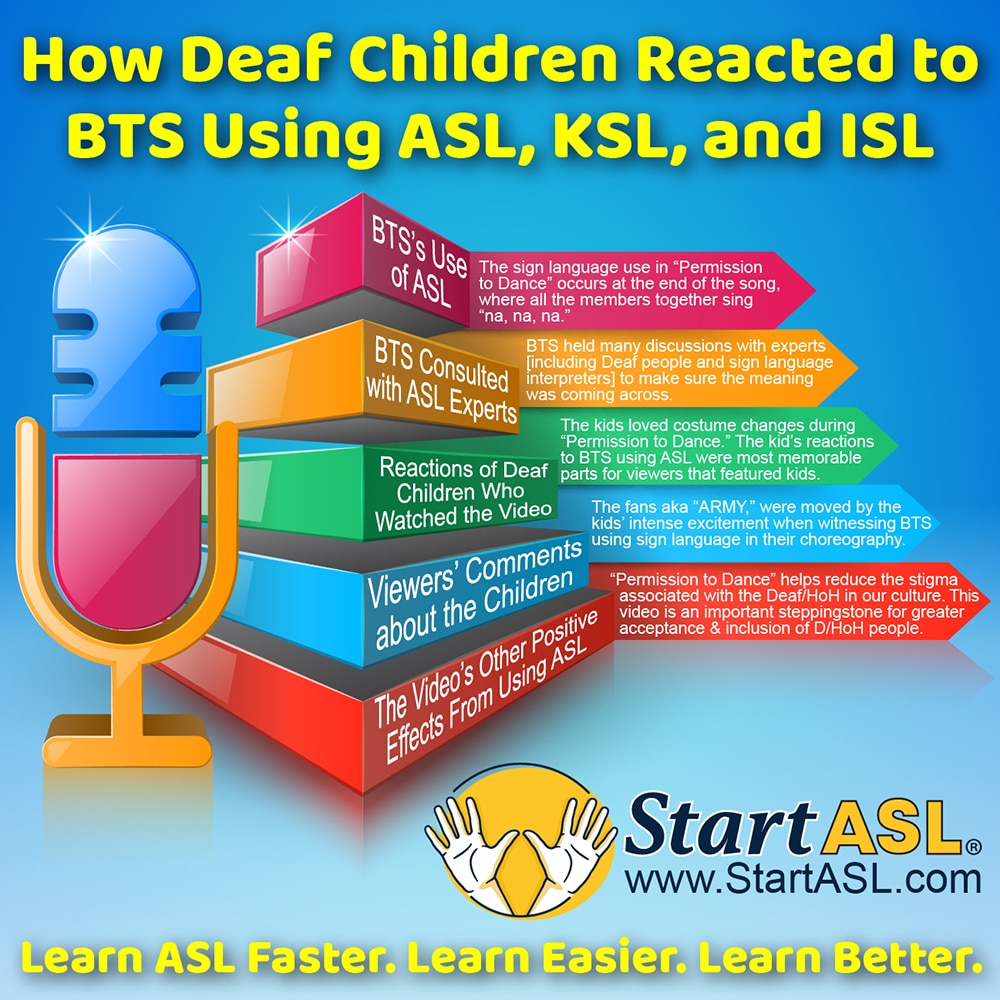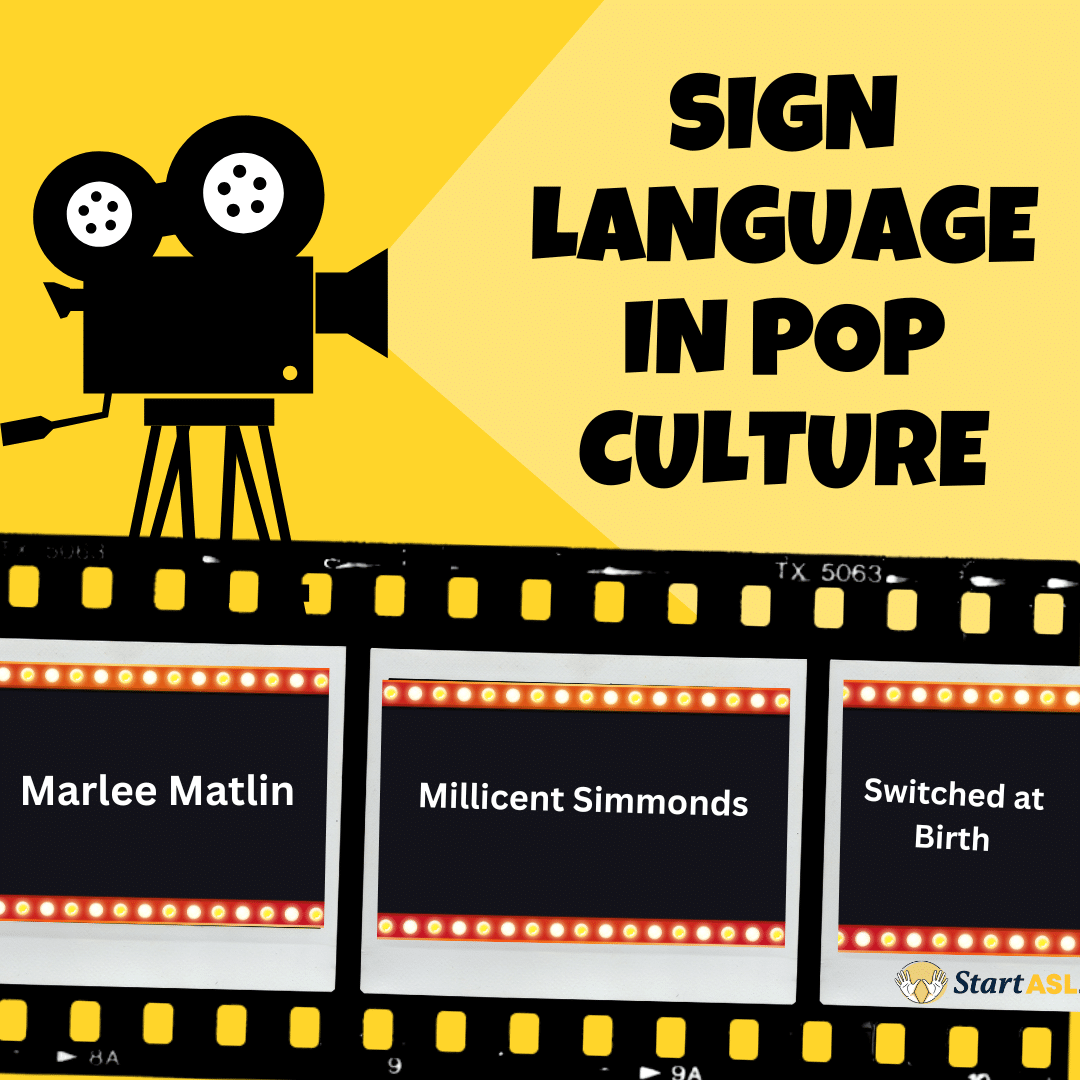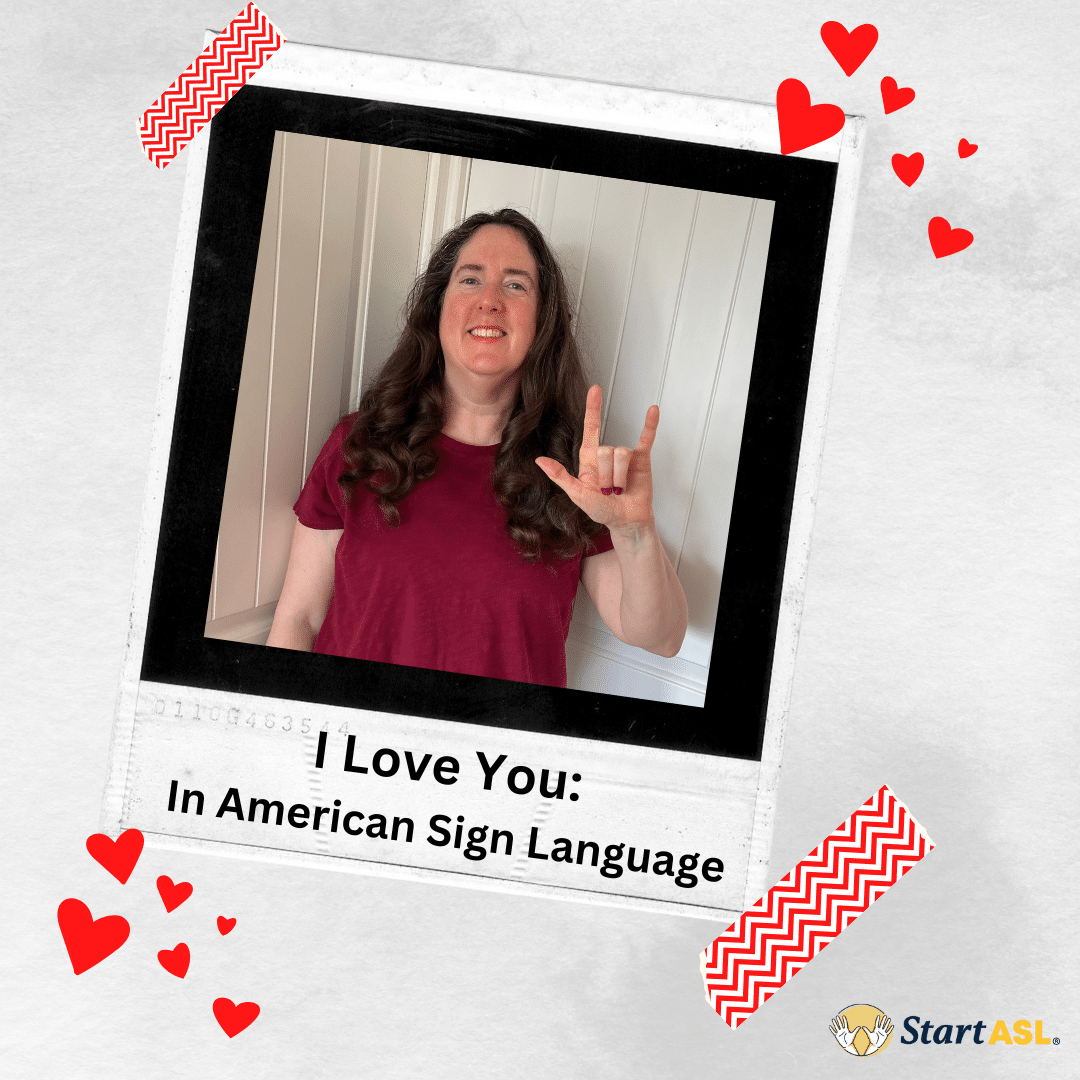
How Deaf Children Reacted to BTS Using ASL, KSL, and ISL
How Deaf Children Reacted to BTS Using ASL, KSL, and ISL

South Korean boy band BTS’s use of sign language in their July 2021 “Permission to Dance” music video received worldwide acclaim. In particular, the group was applauded for including Korean Sign Language (KSL), International Sign Language (ISL), and American Sign Language (ASL) into their performance. The video’s choreography features signs for the words “enjoy,” “dance,” and “peace.”
Before deciding to use ASL in the video, the group wondered what kind of extraordinary gesture they could make to convey a message of hope to the world during the COVID-19 pandemic. The meaning of the signed choreography helped reinforce the song’s point that people had to stay strong during the crisis, including those who were Deaf or Hard of hearing. At that time the COVID-19 pandemic had been going on for more than a year.
BTS’s Use of ASL
The video is set in a post-pandemic world, where the band members are seen dancing in several settings including a sunny location, a patio, and a laundromat. The sign language use in “Permission to Dance” occurs at the end of the song, where all the members together sing “na, na, na.” The song’s concept is a message announcing the end of the COVID-19 pandemic, as the BTS of the future lets loose purple balloons for those of us who survive through the year 2021.

Some worried that the lyrics’ meaning might not be conveyed since the signs had to be made as the members were moving around dancing. However, the group said they wanted to caringly put across a positive message, so they took every measure possible to sign correctly.
BTS Consulted with ASL Experts
To make sure that the meaning of “Permission to Dance” was clear, BTS and their team of choreographers paid extra attention to the details in their signing. A representative of BTS’ entertainment company Big Hit Music said, “After choosing keywords and symbolic gestures, we turned that into choreography. And we went through a process of holding many discussions with experts [including Deaf people and sign language interpreters] to make sure the meaning was coming across.”
In addition to guaranteeing the correctness of their hand gestures, BTS took meticulous care in making the appropriate facial expressions. The experts the band consulted stressed the importance of such expressions in doing sign language. For example, the sign for “enjoy” also conveys “welcome.” So, to unambiguously communicate the lyric about “enjoy” to their Deaf and Hard-of-hearing fans, the group had to clearly show happiness in their faces.
Reactions of Deaf Children Who Watched the Music Video
The YouTube channel Deaf BTS recently posted a video of children’s reactions to the “Permission to Dance” music video. In the past, the channel has released other videos where they have done sign language for various BTS songs. This time, a group of Deaf children fluent in American Sign Language (ASL) were shown reacting to the music video while sitting on the floor.
Once the music video started, the children began expressing their thoughts on the production. These included how much they loved the purple balloons released by the band, and the trendy outfits the members were wearing.
The kids seemed to love the costume changes that went on during “Permission to Dance.” But the children’s reactions to the band using American Sign Language were the most memorable parts for viewers of the video that featured the kids.
For example, one girl was really taken aback when she saw BTS member J-Hope performing in ASL, and shared a touching reaction. She signed, “I’m stunned. That’s ASL ‘dance!’ They signed ‘dance.’ How’d they do that?” She added, “They signed ‘dance’! Cool. They signed ‘dance’ twice. Just like here in the US. I’m gonna pass out.” The excited girl then pretended to faint by dramatically falling forward on the floor.
Then, when the other kids also realized what the band was doing, they couldn’t believe that BTS had used American Sign Language in their performance. One girl wondered about when the band members had learned ASL.
Another girl signed, “I really liked it, but they really changed their outfits so much. I was like whaa? It was cool! And their hair! I’m dead!”
The children were overjoyed with the “Permission to Dance” video because they identified strongly with BTS’s use of their native language, ASL. As mentioned, one girl said, “That’s ASL ‘dance!’ They signed ‘dance.’ They signed ‘dance’! Cool. They signed ‘dance’ twice. Just like here in the US.”
By using sign language in their choreography the band gave the kids and thousands of other Deaf or Hard of hearing (D/HoH) sign language users around the world a feeling of greater inclusion in mainstream culture. Such thoughtful acts by pop stars and other public figures make members of the D/HoH community feel like they’re being seen and heard by the larger society.
BTS’s use of sign language is also raising awareness of the D/HoH culture among hearing people. This can be seen in the positive comments BTS fans made about the children’s responses to “Permission to Dance.”
Viewers’ Comments about the Children
When the video of the kids watching “Permission to Dance” was released, fellow BTS fans, known collectively as “ARMY,” as well as other viewers, expressed great affection for the youngsters. The fans were moved by the kids’ intense excitement when witnessing BTS using sign language in their choreography.
For example, one fan wrote, “This is so beautiful. “Permission to Dance” is making everybody happy. That’s what the song is all about.” Another fan with the Twitter handle “army ot7” said, “Watching this video makes me feel happy and at ease in my heart. And it makes me sure that I chose the right band to be a fan of. I will try to post this video so that BTS can watch it.”
And a third viewer, Sanjana Satish, added, “The expressions of pure joy and happiness from these lovely children made my day. I’m so glad they loved PTD as much as we did. I wish nothing but the BEST for those rays of sunshine.”
The Video’s Other Positive Effects From Using ASL
Fans are captivated by the concept behind “Permission to Dance.” They appreciate how the music video makes use of a diverse cast representing a wide range of occupations. When everyone comes together to dance in the last part of the video, the song’s message is clear: Music helps to unite people of varied backgrounds.
The video’s emphasis on service workers reflects a promise by the BTS members to give their all in helping to improve the lives of fans. “Permission to Dance” features scenes of masked employees being welcomed back to work after a year away due to COVID-19. The scenes include a server dancing alone in an empty restaurant, a maintenance worker dancing with a teacher in a deserted school, and a mail carrier noticing one of the video’s purple balloons while doing her job.
As mentioned above, fans were also greatly impressed by the sign language incorporated into the “Permission to Dance” choreography. One fan wrote on Twitter, “You know what’s cool? The motion that they were doing for ‘dance’ is the actual sign for ‘dance’ in American Sign Language.” And a Twitter user from Germany noted, “In Germany it is the same sign. It’s so touching how BTS truly reaches ALL people in every way possible and gives hope and strength in such a beautiful way.”
Such comments suggest that “Permission to Dance” can help to reduce the stigma associated with the Deaf and Hard of hearing in our culture. They also offer hope to the D/HoH community by showing that hearing people are willing to acknowledge them and their language as equals. In this way, the video is an important steppingstone toward greater acceptance and inclusion of D/HoH people in mainstream society.












5 Responses
I am an ASL teacher and a big BTS fan…..I am part of the ARMY! I love what they have done!!!! This increases awareness of the Deaf Community, plus its fun! AA++++++
skibidi
I am a student and I think they should do more ASL for their songs!
My comment is that i think bts is instering and cool.
I love this. It makes me want to check out some BTS even though I’m definitely not their target demographic lol.